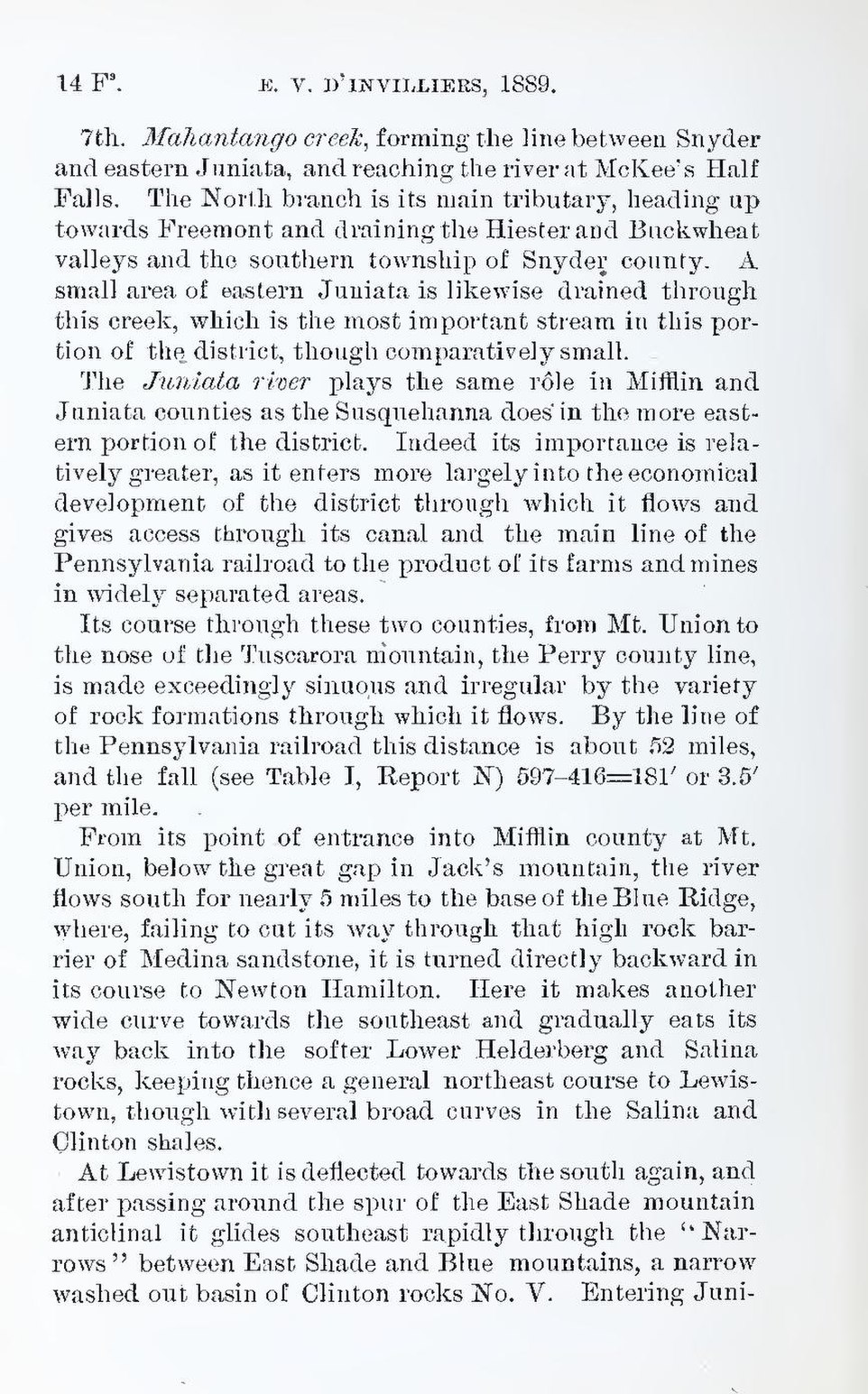7th. Mahantango creek, forming the line between Snyder and eastern Juniata, and reaching the river at McKee’s Half Falls. The North branch is its main tributary, heading up towards Freemont and draining the Hiester and Buckwheat valleys and the southern township of Snyder county. A small area of eastern Juniata is likewise drained through this creek, which is the most important stream in this portion of the district, though comparatively small.
The Juniata river plays the same rôle in Mifflin and Juniata counties as the Susquehanna does in the more eastern portion of the district. Indeed its importance is relatively greater, as it enters more largely into the economical development of the district through which it flows and gives access through its canal and the main line of the Pennsylvania railroad to the product of its farms and mines in widely separated areas.
Its course through these two counties, from Mt. Union to the nose of the Tuscarora mountain, the Perry county line, is made exceedingly sinuous and irregular by the variety of rock formations through which it flows. By the line of the Pennsylvania railroad this distance is about 52 miles, and the fall (see Table I, Report N) 597-416=181′ or 3.5′ per mile.
From its point of entrance into Mifflin county at Mt. Union, below the great gap in Jack’s mountain, the river flows south for nearly 5 miles to the base of the Blue Ridge, where, failing to cut its way through that high rock barrier of Medina sandstone, it is turned directly backward in its course to Newton Hamilton. Here it makes another wide curve towards the southeast and gradually eats its way back into the softer Lower Helderberg and Salina rocks, keeping thence a general northeast course to Lewistown, though with several broad curves in the Salina and Clinton shales.
At Lewistown it is deflected towards the south again, and after passing around the spur of the East Shade mountain anticlinal it glides southeast rapidly through the “Narrows” between East Shade and Blue mountains, a narrow washed out basin of Clinton rocks No. V. Entering Juni-
